


Advanced Techniques For Snowboarders
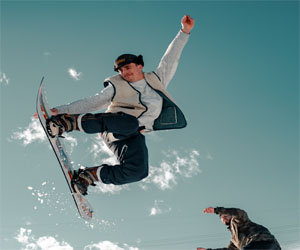
Snowboarding is not just a sport; it's an art form, a dance with gravity, and an exhilarating journey down the mountainside. As you progress from being a novice to an advanced snowboarder, you'll find a world of new techniques and skills waiting to be explored. In this article, we'll delve into advanced techniques that will elevate your snowboarding experience and allow you to conquer even the most challenging slopes.
1. Carving Like A Pro: Carving is an essential skill for advanced snowboarders. It involves making precise, controlled turns, using the edges of your board to cut through the snow. To master carving, focus on your body positioning, leaning into the turns, and applying just the right amount of pressure on your toes and heels. Carving not only enhances your control but also adds a stylish flair to your riding.
2. Riding Switch: Riding switch, also known as riding fakie, is the art of snowboarding in the opposite direction from your regular stance. To become an advanced snowboarder, you should be comfortable riding switch. Practice riding with your non-dominant foot leading and work on your balance and control to improve your overall snowboarding skills.
3. Terrain Park Tricks: If you're aiming to take your snowboarding to the next level, consider venturing into terrain parks. Learn tricks like ollies, spins, grabs, and board slides. Terrain parks offer an exciting playground for advanced snowboarders, allowing you to express your creativity and style while navigating jumps, rails, and other features.
4. Off-Piste Riding: Off-piste or backcountry snowboarding takes you away from the groomed slopes and into the untouched, wild terrain. Before attempting off-piste riding, it's crucial to acquire the necessary avalanche safety skills and equipment. This advanced snowboarding technique opens up a world of exploration and adventure for those who crave more than just groomed runs.
5. Navigating Steep Terrain: Advanced riders can handle steeper slopes with confidence and control. To master steep terrain, work on your balance, edge control, and body positioning. Learn to initiate quick turns and control your speed, making descents on challenging slopes feel exhilarating rather than intimidating.
6. Powder Riding: Powder snow is a snowboarder's dream. To excel in powder riding, keep your weight centered, use a wider stance, and make fluid, surf-like movements. Lean back slightly to keep your nose afloat and enjoy the feeling of floating on a sea of untouched snow.
7. Mastering The Halfpipe: If you're an adrenaline junkie, consider trying your hand at the halfpipe. This advanced technique involves riding the walls of a U-shaped, snow-covered ditch and performing aerial tricks. It requires a high level of skill, coordination, and courage, but the thrill of soaring above the pipe is unmatched.
8. Video Analysis: To refine your advanced snowboarding techniques, consider recording your rides and analyzing the footage. This will help you identify areas for improvement, perfect your style, and learn from your mistakes.
Advancing in snowboarding is a journey that offers endless opportunities for growth and enjoyment. By mastering these advanced techniques, you can elevate your skills, experience the mountain in new ways, and truly become one with the snow. Remember to always prioritize safety, wear the appropriate gear, and enjoy the ride as you conquer the mountains with grace and style.


Getting Started Right
 Pickleball Paddles: The heart of the game, pickleball paddles come in various shapes, sizes, and materials. Most paddles are made of composite materials or wood, with varying degrees of weight and grip sizes. Choosing the right paddle is a personal preference, but beginners often opt for a mid-weight, composite paddle with a comfortable grip. As you progress, you can explore different options to suit your playing style.
Pickleball Paddles: The heart of the game, pickleball paddles come in various shapes, sizes, and materials. Most paddles are made of composite materials or wood, with varying degrees of weight and grip sizes. Choosing the right paddle is a personal preference, but beginners often opt for a mid-weight, composite paddle with a comfortable grip. As you progress, you can explore different options to suit your playing style.
Pickleball Balls: Pickleball balls are specifically designed for the sport, featuring small perforations to optimize aerodynamics and control. Outdoor and indoor balls have distinct characteristics. Beginners should start with outdoor balls, which are more durable, and as you advance, you can experiment with indoor balls for a different playing experience.
Footwear: Comfortable and supportive athletic shoes with non-marking soles are a must for pickleball. Since the game involves quick lateral movements, it's essential to have shoes that provide stability and reduce the risk of injuries. Court shoes designed for tennis or indoor sports are suitable for pickleball.
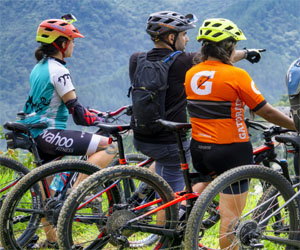 Safety First: Safety should be your top priority. Always wear a properly fitted helmet and gloves, and consider protective gear like knee and elbow pads. Ensuring that your bike has functioning brakes and reliable tires is essential for a safe ride.
Safety First: Safety should be your top priority. Always wear a properly fitted helmet and gloves, and consider protective gear like knee and elbow pads. Ensuring that your bike has functioning brakes and reliable tires is essential for a safe ride.
Choose The Right Trail: Start on beginner-friendly trails. Look for well-marked, easy-to-moderate paths that provide a comfortable introduction to mountain biking. These trails typically have fewer obstacles and gentler inclines, making them ideal for beginners.
Learn The Techniques: Mountain biking involves specific techniques that are important for both safety and enjoyment. Focus on body positioning, balance, and weight distribution to maintain control on uneven terrain. Learning to navigate obstacles, handle steep descents, and manage your speed on downhills is crucial.
Ride With Others: Riding with experienced friends or joining a beginner's group ride can be immensely helpful. You can learn from their experience and get tips on tackling obstacles or mastering techniques. Additionally, riding with others can provide a sense of camaraderie and motivation.
Gradual Progression: Don't rush your progression. As you gain confidence and skills, you can start exploring more challenging trails. It's important to understand your limits and gradually push them while staying within your comfort zone.
Be Mindful Of The Environment: Respect the natural environment and the trails you ride on. Follow trail rules and guidelines, and avoid disturbing wildlife or damaging the terrain. Leave no trace and help maintain the beauty of the outdoors.
The Journey Into Nature's Uncharted Realms
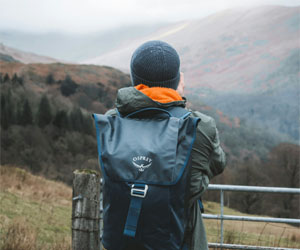 Preserving Pristine Beauty: Exploring untouched terrains comes with a profound responsibility: preserving the pristine beauty that makes them unique. Those who venture into these areas understand the importance of minimizing their impact, adhering to Leave No Trace principles, and becoming stewards of the environment.
Preserving Pristine Beauty: Exploring untouched terrains comes with a profound responsibility: preserving the pristine beauty that makes them unique. Those who venture into these areas understand the importance of minimizing their impact, adhering to Leave No Trace principles, and becoming stewards of the environment.
Remote And Rugged Landscapes: Untouched terrains are often found in remote and rugged landscapes. These areas are typically far from the conveniences of modern civilization, making exploration an adventure in itself. Whether trekking through dense rainforests, traversing arid deserts, or summiting towering peaks, the journey is as much a part of the experience as the destination.
Wildlife Encounters: Exploring untouched terrains often leads to remarkable wildlife encounters. These areas are havens for diverse and often rare species of animals and plants. Observing these creatures in their natural habitats is a privilege that fosters a deep connection with the natural world.
Challenges And Self-Discovery: The challenges posed by untouched terrains are opportunities for self-discovery. Navigating rough terrain, facing unpredictable weather, and dealing with unforeseen obstacles are part of the journey. These experiences test one's resilience, resourcefulness, and adaptability.
Silence And Solitude: In untouched terrains, silence is your companion, and solitude your confidant. The absence of human-made noise allows for a deeper connection with the natural world and provides an opportunity for introspection and reflection.

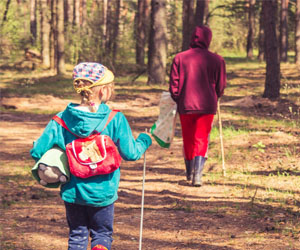



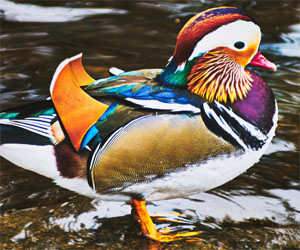
A Path To Excellence
 1. Throwing Techniques: The foundation of any Ultimate Frisbee player's skill set is mastering different throwing techniques. These include:
1. Throwing Techniques: The foundation of any Ultimate Frisbee player's skill set is mastering different throwing techniques. These include:
Forehand: The forehand throw, also known as the flick, involves gripping the disc with your thumb on top and your fingers underneath. It's a versatile throw used for short, medium, and long-distance passes.
Backhand: The backhand throw is executed by gripping the disc with your thumb underneath and your fingers on top. It's another essential throw for various situations in the game.
Hammer: The hammer throw is an overhead toss that can be useful for making passes over defenders. It requires a unique grip and throwing motion.
Practicing these throws, both for distance and accuracy, is fundamental for effective gameplay.
2. Catching Skills: Catching is a vital aspect of Ultimate. Players must be proficient in catching both forehand and backhand passes. A good catch involves tracking the disc, positioning yourself correctly, and using proper hand placement to secure the catch.
An Adventure Like No Other
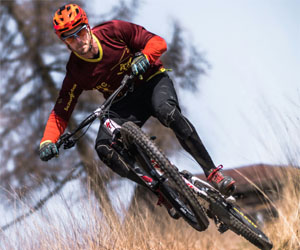 Challenging terrain in mountain biking can include everything from steep inclines and rocky paths to tight switchbacks and mud-soaked trails. These elements add a level of complexity and danger to the sport, making it an adrenaline-pumping experience for those who crave adventure.
Challenging terrain in mountain biking can include everything from steep inclines and rocky paths to tight switchbacks and mud-soaked trails. These elements add a level of complexity and danger to the sport, making it an adrenaline-pumping experience for those who crave adventure.
One of the key attractions of mountain biking through challenging terrain is the constant need for skill and concentration. Riders must be fully engaged in their surroundings, making split-second decisions on how to navigate obstacles. It's a test of physical strength, mental acuity, and technical prowess. The rewards of successfully navigating these difficult paths are not just the satisfaction of conquering them but also the breathtaking views and the sense of accomplishment that comes with it.
For many mountain bikers, conquering challenging terrain is a personal journey of growth and self-discovery. It pushes them to their limits and helps them break through mental barriers. Whether it's mastering a tricky downhill section, clearing a daunting rock garden, or tackling a steep climb, every challenge overcome is a victory and a testament to the rider's determination.
Safety is a paramount concern when mountain biking through challenging terrain. Riders must wear appropriate protective gear, including a helmet, gloves, and body armor. Additionally, a well-maintained mountain bike with sturdy brakes and reliable suspension is essential. It's also a good idea to ride with a buddy or let someone know your planned route in case of emergencies.
In terms of technique, riders should hone their skills on easier trails before attempting the more challenging ones. Proper body positioning, weight distribution, and braking are crucial to maintaining control and safety on steep descents and tricky ascents. Moreover, understanding how to pick the right line through obstacles and using momentum effectively can make a significant difference in successfully navigating challenging terrain.